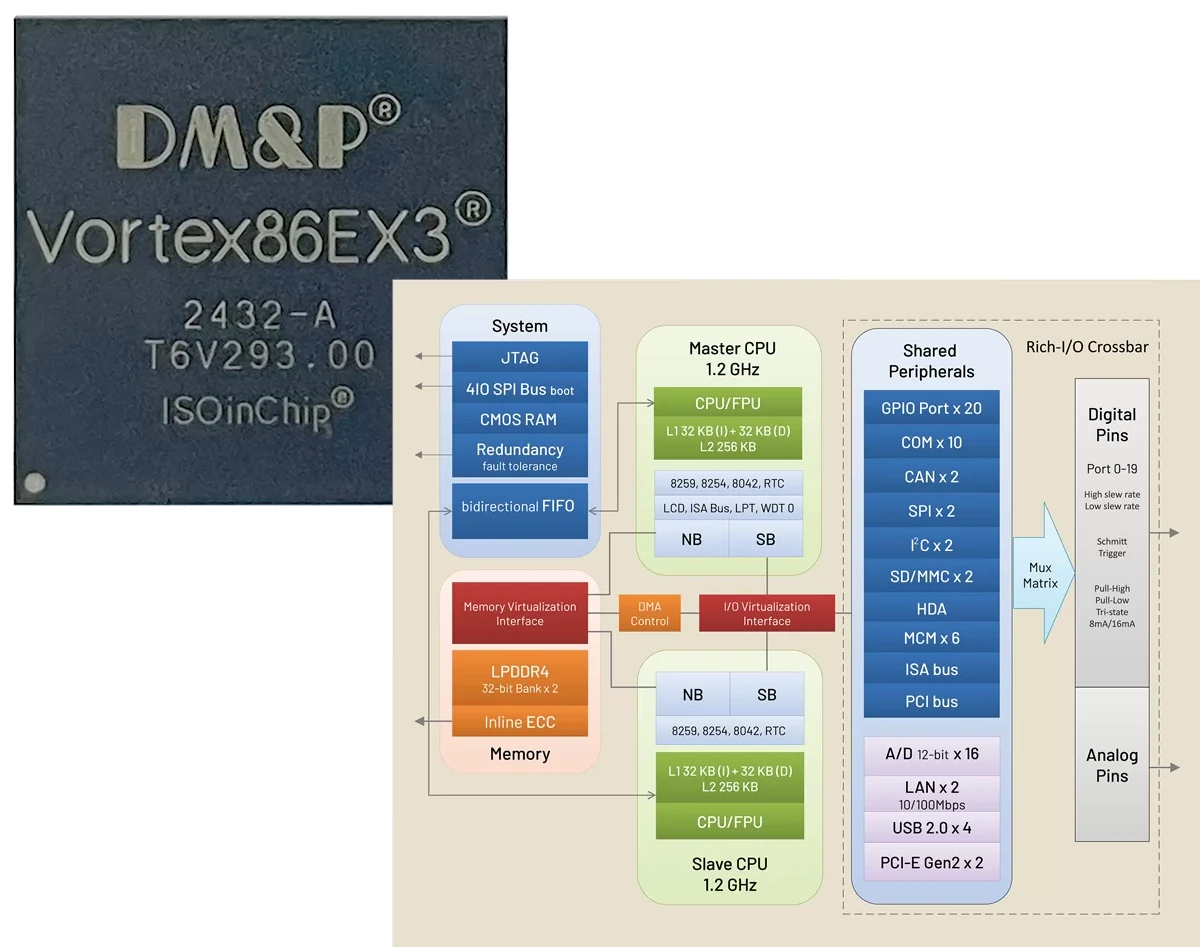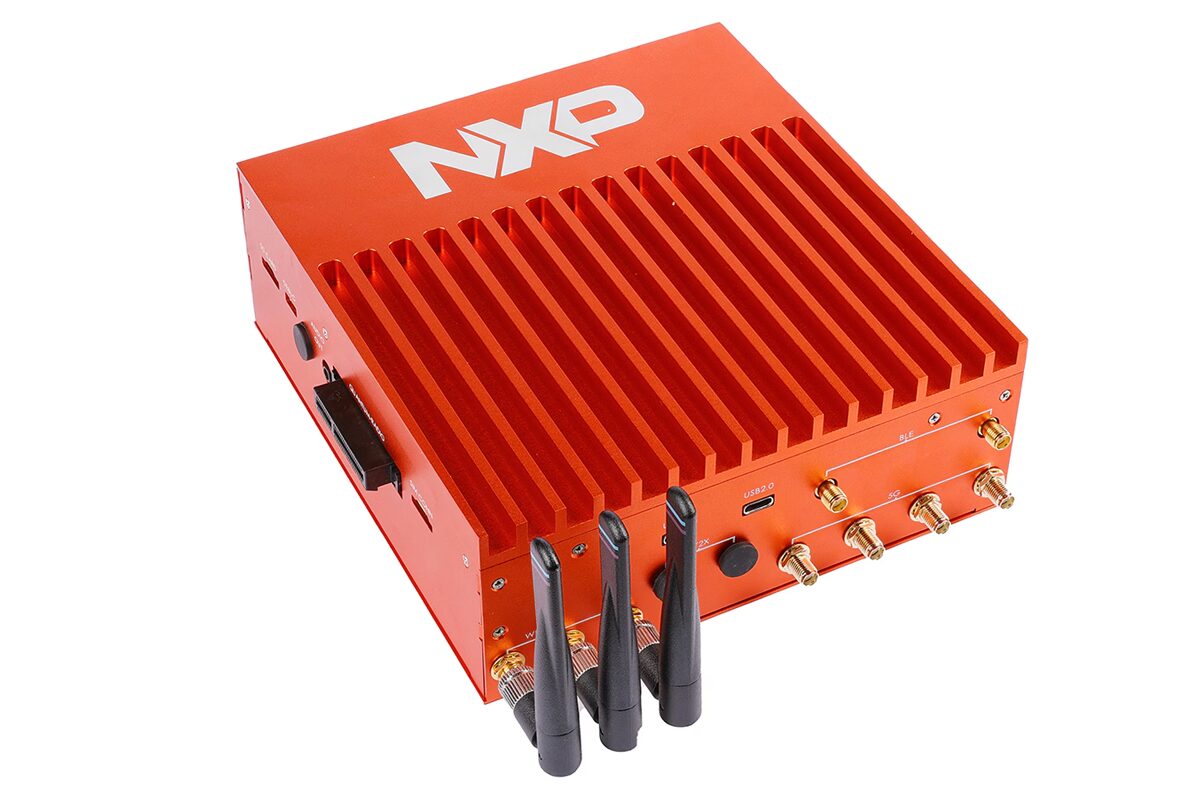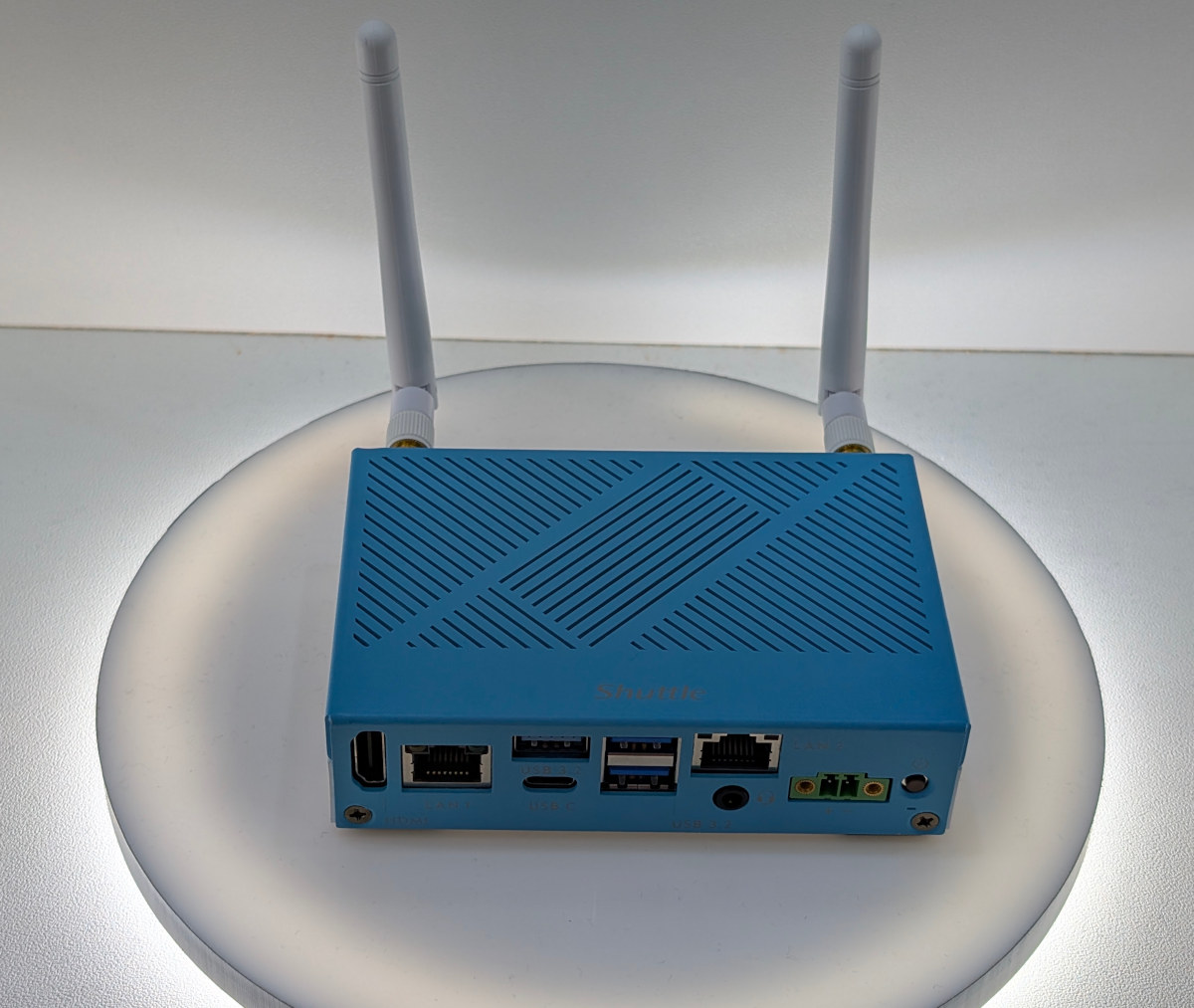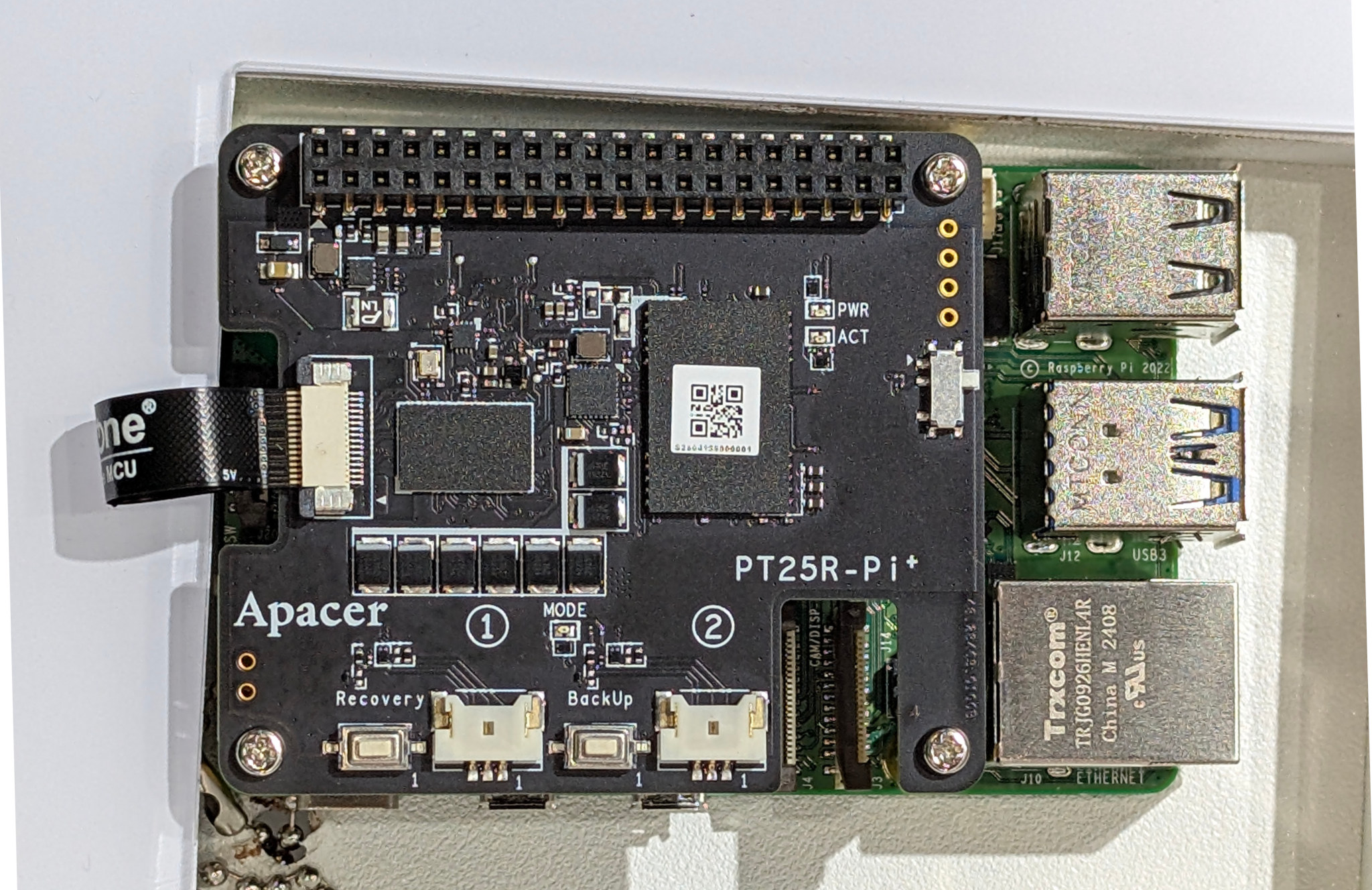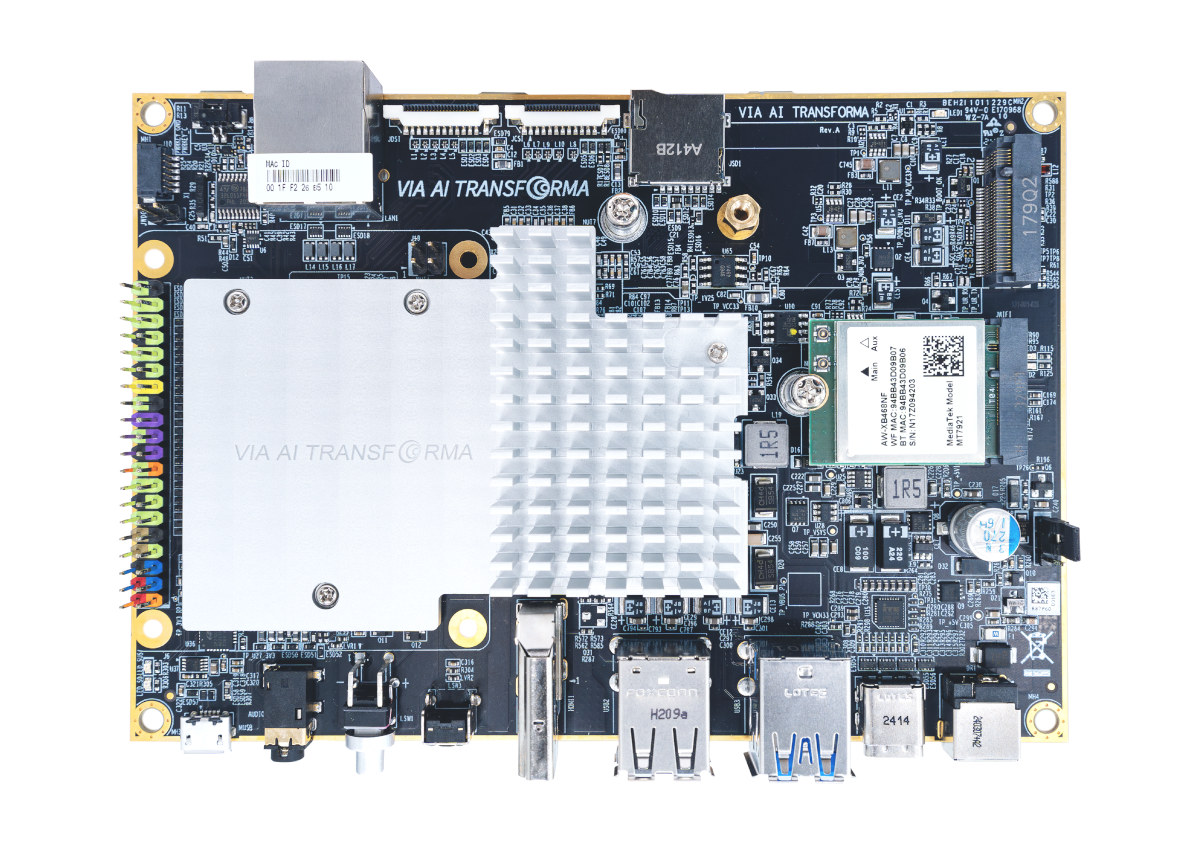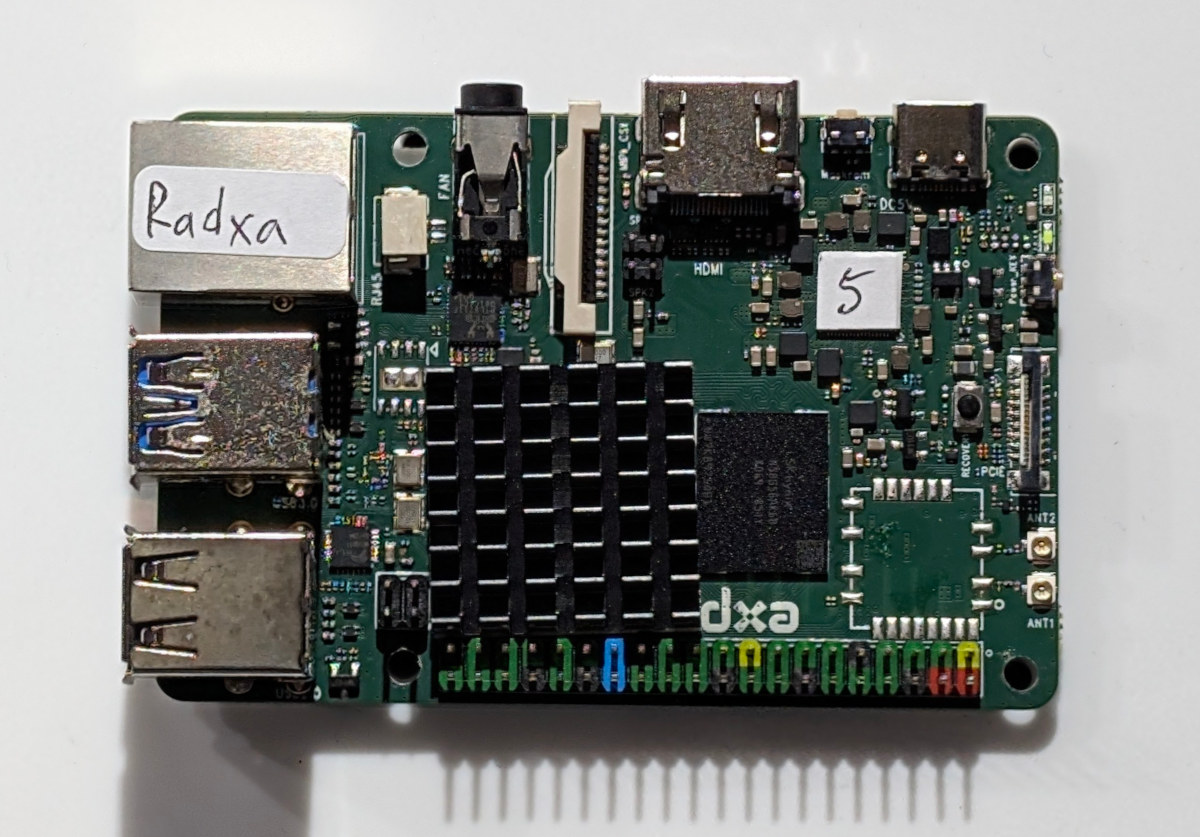D&MP Vortex86EX3 is a Twin Core x86 SoC for industrial applications with a master CPU and a Slave CPU, each capable of running an operating system independently, be it Windows 10 IoT, Linux, legacy OS like WinCE or DOS, or an RTOS like QNX. Like its predecessors, such as the DM&P Vortex86EX2 or Vortex86DX3, the Vortex86EX3 – also written Vortex86 EX3 – supports older PCI and ISA interfaces, as well as more recent interfaces such as PCIe, and the usual serial, CAN Bus, and GPIO found in this type of processor. The Vortex86EX3 is the most powerful x86 SoC from the company so far, with two cores clocked at up to 1.2 GHz to 1.6 GHz. The comparison table below lists the specifications and main features of the Vortex86DX3 (2015), Vortex86EX2 (2019), and the new Vortex86EX3. The Vortex86EX3 is not listed on the Vortex86.com website yet, and instead, I found […]
NXP OrangeBox 2.0 V2X automotive domain controller features NXP i.MX 94 SoC
NXP OrangeBox 2.0 is an NXP i.MX 94-powered V2X (Vehicle-to-Everything) automotive domain controller development platform designed for modern vehicles. It works as a centralized controller between the vehicle’s gateway and its wired and wireless technologies, with features like Wi-Fi 6/6E, Bluetooth 5.3, UWB, 5G cellular, and secure car access for automotive zone controllers, smart car access systems, and V2X communication systems. It’s the first i.MX 94 platform we’ve covered here, and NXP says the OrangeBox 2.0 delivers up to 4x the performance of its predecessor – the OrangeBox – based on an NXP i.MX 8XLite SoC. The i.MX 94’s Cortex-A55, Cortex-M7, and Cortex-M33 cores, and the eIQ Neutron NPU enable AI features such as an intelligent firewall and predictive maintenance. For cybersecurity, it includes post-quantum cryptography support, an EdgeLock secure enclave, and a functional safety island that meets ISO 26262 ASIL-B standards. Connectivity options include dual 2.5 Gbps and triple […]
Shuttle unveils Intel Twin Lake/Amston Lake IoT gateway and Mini PCs, Qualcomm Snapdragon X Plus / Elite AI mini PC at Computex 2025
Shuttle showcased a wide range of devices at Computex 2025, including the FTL1 IoT Edge Twin Lake/Amston Lake mini PC/gateway, the XPC Nano NE20N/NE10N Twin Lake/Alder Lake-N mini PCs, the XPC Nano AI Mini PC G1 powered by a Qualcomm Snapdragon X Plus / Elite Arm SoC, and the XPC Fanless DL40N/DL30N with Intel Twin Lake and Alder Lake-N processors, respectively. Shuttle FTL1 IoT Edge gateway FTL1 specifications: SoC (One or the other) Intel Processor N150 Twin Lake SoC with Intel UHD Graphics Intel Atom x7211RE Amston Lake SoC with Intel UHD Graphics System Memory – DDR5 4800 MT/s, up to 16 GB (note: It should be able to handle up to 64GB DDR5 memory) Storage – M.2 SATA or PCIe socket Video Output – HDMI up to 4096 x 2160 @ 60Hz) DisplayPort via USB Type-C Networking 2.5GbE RJ45 port (Intel controller), optional 2nd LAN port Optional WiFi and […]
Apacer PT25R-Pi HAT SSD for Raspberry Pi 5 integrates 60GB to 480GB BGA SSD, supports CoreSnapshot 2 Backup and Recovery function
Apacer PT25R-Pi HAT SSD is an upcoming HAT for the Raspberry Pi 5 or compatible SBCs with a PCIe FFC connector that integrates a BGA SSD chip with 60 GB to 480GB capacity, and supports advanced features like CoreSnapshot 2 backup and recovery solution, write protect, instant keychange for improved security, and power loss protection. We’ve already seen many Raspberry Pi HATs for NVMe SSDs, but those are typically designed for M.2 SSD modules. The PT25R-Pi HAT SSD comes with built-in storage on the HAT, so it’s basically plug-and-play, and all the user has to do is install the HAT and connect the cable. Apacer PT25R-Pi / PT25R-Pi+ HAT SSD specifications (preliminary): Storage – Built-in 60GB to 480GB SSD chip Connection to Raspberry Pi 5 40-pin GPIO header 16-pin Raspberry Pi FFC connector limited to PCIe Gen2 x1 for optimized power usage Advanced features Optional support for CoreSnapshot 2 backup […]
VIA AI Transforma Model 1 – 3.5-inch fanless SBC features MediaTek Genio 700 AIoT SoC for Edge AI applications
VIA AI Transforma Model 1 is an edge AI platform powered by a MediaTek Genio 700 (MT8390) SoC with 4 TOPS of AI performance designed for industrial automation, smart cities, and more. The 3.5-inch fanless SBC is equipped with 8GB RAM and 16GB eMMC flash, and offers three display interfaces (HDMI, DP, MIPI DSI), a 4-lane MIPI CSI camera interface, gigabit Ethernet networking, M.2 sockets for wireless and cellular connectivity, several USB ports, a 40-pin GPIO header, and more. VIA AI Transforma Model 1 specifications: SoC – MediaTek Genio 700 (MT8390) CPU – Octa-core processor with 2x Cortex-A78 cores @ up to 2.2 GHz, 6x Cortex-A55 cores @ up to 2.0 GHz GPU – Arm Mali-G57 MC3 GPU with support for OpenGL ES 1.1/2.0/3.2, OpenCL ES 2.2, and Vulkan 1.0/1.1 APIs VPU Encoding up to 4Kp30 with H.265/HEVC or H.264 Decoding up to 4Kp75, AV1, VP9, HEVC, H.264 codecs supported […]
Radxa NIO 5A credit card-sized Mediatek Genio 520 SBC showcased at Computex 2025
Radxa NIO 5A is an upcoming Mediatek Genio 520 SBC in credit card/Raspberry Pi form factor that should offer a more affordable entry into the MediaTek Genio family than Radxa Nio 12L equipped with a powerful Mediatek Genio 1200 SoC. There’s no public information on the web about it, but I was sent some photos of the board from Mediatek’s booth at Computex 2025, and we know it’s powered by the Genio 520 octa-core Cortex-A78/A55 SoC with a 10 TOPS AI accelerator and comes with “large memory and high-capacity storage”. Let’s see if we can derive more detailed specs from the photos and other public information about the SoC. Radxa NIO 5A specifications (preliminary): SoC – Mediatek Genio 520 (MT8371) CPU – Octa-core processor with 2x Arm Cortex-A78 up to 2.2 GHz (Commercial) or 2.0 GHz (Industrial) 6x Arm Cortex-A55 up to 2.0 GHz (Commercial) or 1.8 GHz (Industrial) GPU […]


